by Gerald Morissette
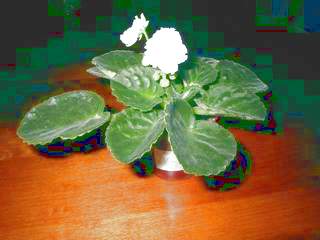 |
One of the reasons to repot an African Violet is a pot too small, limiting the plant development and the flower quality. Repotting frequency: as needed | |
|
Another reason is that as the leaves at the base of the plant are trimmed away, after a while, there is a naked piece of stem altering the appearance of the plant. Repotting frequency: as needed |
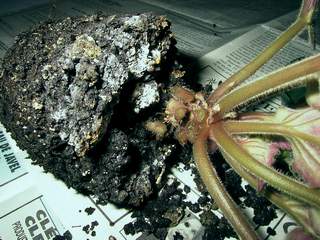 | |
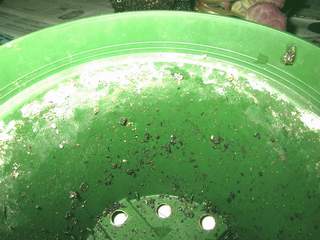 |
The third reason is to eliminate the salt deposits at the surface of, and in the potting soil. They are also noticeable on the edge of the pot. Repotting frequency: twice a year | |
|
For the young plants, it is not very complicated. They just need to be taken off the pot, the whitish salt deposit at the surface of the soil scrapped away. They are then put in a slightly bigger pot, new soil is added, tamped lightly, and watered. |
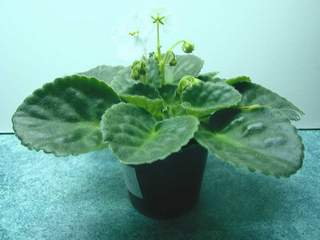 | |
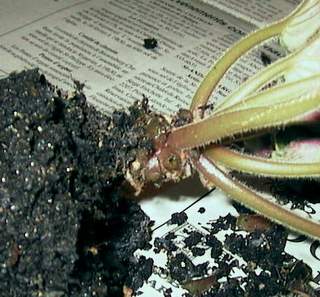 |
For mature plants, not only you want to remove the whitish deposits on the pot and on the surface of the soil, but you also want to remove as much of the soil as possible without damaging the roots. After, just replace the soil, gently tamping it down, and water. For an average size plant, use at most a 4-inch pot (10 cm), else you won't get any flower. | |
|
To hide the piece of stem, visible at the plant base, the trick is to remove a layer at the bottom of the root ball. The thickness of the layer should equal the length stem to hide. Put the plant back in the pot, fill up with soil, tamping it slightly, and water. New roots will be created to replace the ones that were sacrificed. |
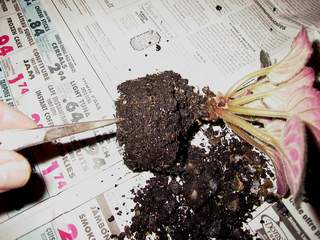 | |
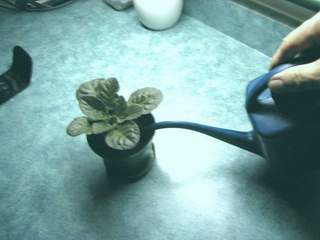 |
It is important to press the soil slightly and to water, in order to insure a better contact between the new soil and the rootball. Never wet the leaves or the center of an African violet. If you dropped some soil on the leaves, use a painting brush to clean them without any water. |
|
Desert Tropicals Home Page List of All the Plants Desert-Tropicals is dedicated to provide gardening advice, gardening ideas, and information about flower of all kind for landscape and collections.We try to check carefully the identification of the plants on the illustrations as well as the other information from the page, but occasionally errors do occur. if you notice anything that needs to be changed please contact us.Thanks. © 1998-2020 Philippe Faucon, All Rights Reserved. |